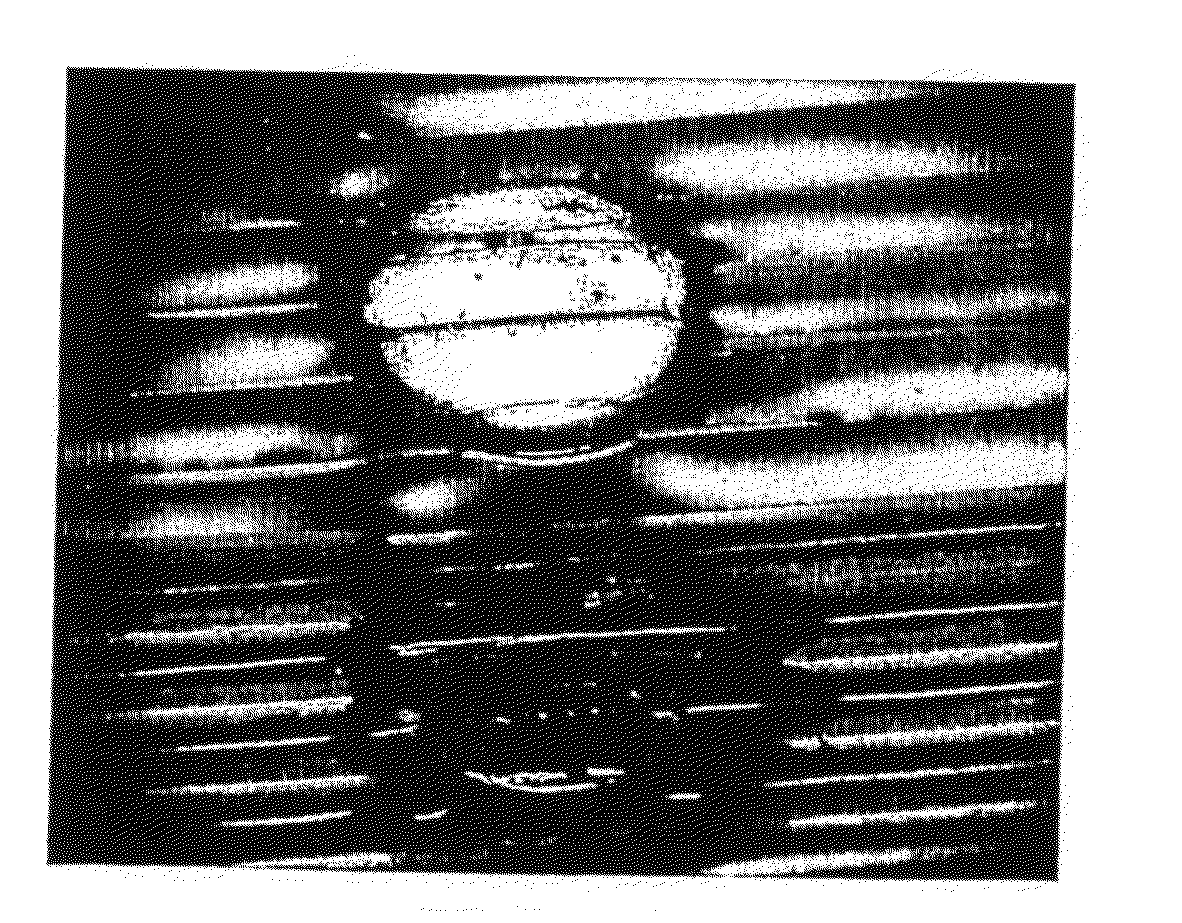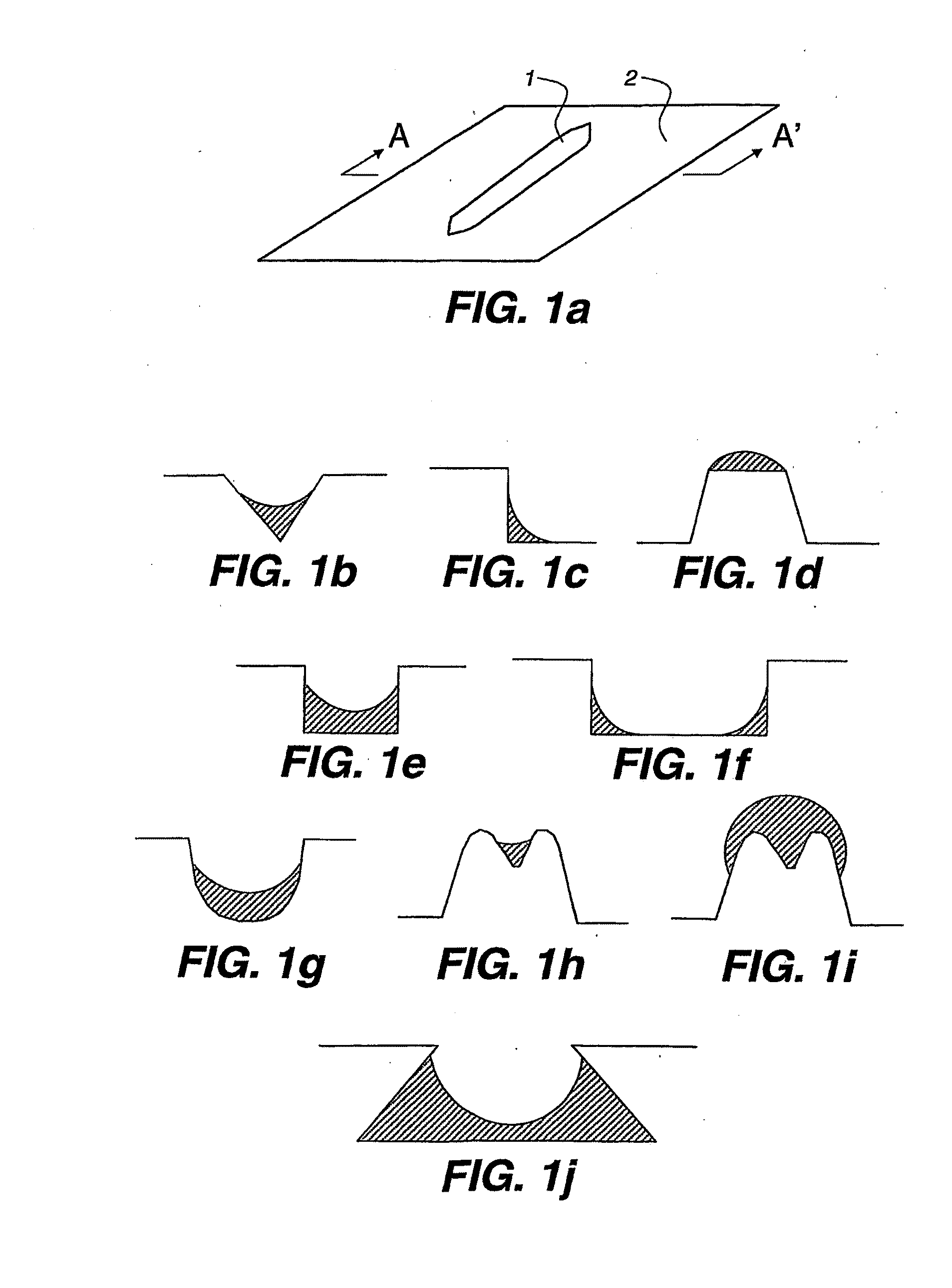Patterning method
a patterned layer and pattern technology, applied in the field of patterning methods, can solve the problems of dimensional changes within a single patterned layer, registration errors may accumulate between tft layers, and changes in the dimensions of the carrier substrate, so as to reduce parasitic capacitance, accurate alignment, and improve device speed
- Summary
- Abstract
- Description
- Claims
- Application Information
AI Technical Summary
Benefits of technology
Problems solved by technology
Method used
Image
Examples
example 1
[0050]In FIG. 3 the black areas are channels 33 created in photoresist, with a width of 50-200 micrometers and a depth of 50 micrometers. The large black squares are the ‘deposition regions’34 into which the functional liquid is deposited by ink jet. Capillary forces then cause the liquid to flow into the channels.
[0051]The behaviour of the liquid is determined by the contact angle between the liquid and the substrate in which the channels are fabricated. Two angles are of importance here; the advancing angle, which determines whether the liquid will wet the substrate and be drawn into the channel, and the receding angle, which determines whether the substrate will remain wetted by the liquid, or if the liquid will de-wet. This is important if a design such as that shown in FIG. 3 is used to create conductive pads for an electrical device. Ideally one would like the ‘deposition regions’ (black squares) to remain wetted by the liquid, to allow for subsequent electrical connection to ...
example 2
[0053]In this example V shaped grooves in polycarbonate (3M optical lighting film, SOLF™) were used as the substrate material as shown in FIG. 4. FIG. 4a shows schematically the apex of each groove 41 and two deposition regions 42 and 43 defined in the substrate. The untreated polycarbonate material has an advancing contact angle of ˜70 deg. and a receding angle of ˜65 deg. with water. The high advancing angle causes the water to not freely wet the polycarbonate, and so it was not drawn along the grooves.
[0054]The test liquid used was a non-drying ink used as a model fluid with constituents;
Water+
[0055]Diethylene glycol—14-22%
Black colourant 13-14%
Butoxy tri glycol 10%
Urea 3-6%
Triethanolamine 1-3%
[0056]The solution as used had a viscosity of a few cP and a surface tension of approximately 30 mNm−1.
[0057]The advancing contact angle and receding contact angle of the test liquid on the polycarbonate substrate were both approximately 30 degrees. It was found that the liquid would wick a...
PUM
| Property | Measurement | Unit |
|---|---|---|
| contact angle | aaaaa | aaaaa |
| receding contact angle | aaaaa | aaaaa |
| receding contact angle | aaaaa | aaaaa |
Abstract
Description
Claims
Application Information
 Login to View More
Login to View More - R&D
- Intellectual Property
- Life Sciences
- Materials
- Tech Scout
- Unparalleled Data Quality
- Higher Quality Content
- 60% Fewer Hallucinations
Browse by: Latest US Patents, China's latest patents, Technical Efficacy Thesaurus, Application Domain, Technology Topic, Popular Technical Reports.
© 2025 PatSnap. All rights reserved.Legal|Privacy policy|Modern Slavery Act Transparency Statement|Sitemap|About US| Contact US: help@patsnap.com



